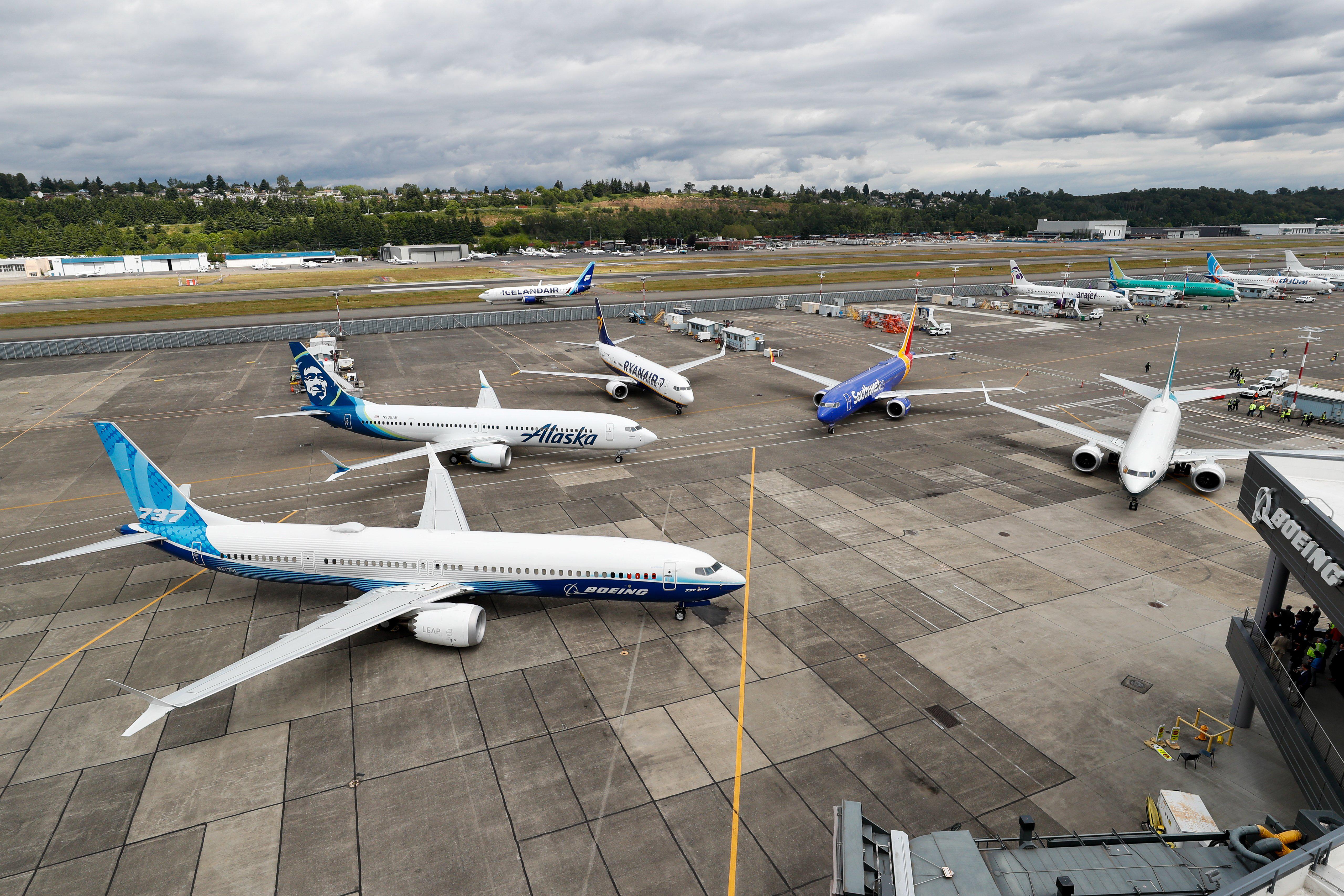
The 737 MAX family at Boeing’s Renton, Wash., facility
Technical experts from the Air Line Pilots Association (ALPA) have told U.S. lawmakers privately that granting Boeing the time it needs to get the 737-7 and 737-10 certified is a less risky approach than enforcing a pending deadline that would require flight crew alerting upgrades for all new larger aircraft.
The pilots’ union, which represents four carriers that plan to operate multiple 737 MAX variants, has not spoken out publicly on the looming deadline put in place by a 2020 law. But ALPA representatives have made it clear to Capitol Hill lawmakers that the association supports keeping the 737 MAX family flight decks common even if Boeing cannot wrap up certification by the Dec. 22 deadline, sources with knowledge of the meetings between the two sides told Aviation Week.
ALPA declined to discuss any meetings with lawmakers and would not take a position on an extension. But, it added, it believes the current 737 MAX design is safe.
“ALPA was proud to support the bipartisan Aircraft Certification Reform and Accountability Act to put in place critical safety reforms needed to ensure that pilots are an integral part of the certification process,” the association said. “While it is up to Congress to determine whether or not to grant the manufacturer an extension, we are confident in the safety of the aircraft based on having conducted extensive reviews of system safety enhancements and modifications and risk assessments that led to the successful return to service resulting in millions of flight hours in passenger operations.”
ALPA’s position aligns with Boeing and the Southwest Airlines Pilots Association, which argue that flight deck commonality is less risky than having different crew alerting systems on the same aircraft family. The Allied Pilots Association, which represents American Airlines pilots, is urging Congress to stand pat and require Boeing to comply with the new flight crew alerting regulations if necessary.
The 2020 law was prompted by findings from investigations of two 737-8 fatal accidents in 2018 and 2019, and related probes into how the FAA certifies aircraft. Investigators pointed to a poorly designed software addition—the Maneuvering Characteristics Augmentation System (MCAS) flight control law—to the 737 flight control computer as the primary factor in both accident sequences. Boeing modified the MCAS software logic as part of changes ordered by regulators while the 737 MAX fleet was grounded from March 2019 to December 2020.
But experts also cited the pilots’ confusion over a series of alerts and warnings triggered by the faulty software as a risk—an issue that more modern alerting systems help minimize. The FAA granted Boeing exemptions from some current flight crew alerting regulations during the 737 MAX’s certification based on Boeing’s contention that the designs are safe and maintaining maximum commonality with previous 737 versions was a sensible approach.
While the 737-7 and 737-10’s fates remain up in the air, Boeing is adding some new functionality to the latest 737 designs that help bridge the regulatory gap. The 737-10 will be certified with switches that turn off nuisance stall warnings, for instance. Boeing plans to make the modification available on all 737 MAXs.
Meanwhile, new information from the FAA suggests Boeing continues to grapple with presenting compliant system safety assessments (SSAs) for the uncertified 737 MAXs. An Oct. 12 letter from the agency to Boeing contends that the company is not adequately documenting assumed pilot intervention as part of demonstrating some potentially catastrophic failure scenarios are survivable.
“Following our review of several SSAs with catastrophic hazard classifications, we found that the flight crew needs to complete an action to mitigate the hazard or the SSAs assume certain crew action in the quantitative analysis,” FAA Acting Manager of Boeing’s organization designation authorization (ODA) oversight office Ian Won wrote to Boeing VP and general manager of Product & Services Safety and ODA Lead Administrator Tom Galantowicz.
“Not all human factors assumptions were captured in the crew response forms,” the letter continued. The letter was first reported by the Wall Street Journal.
One of the 2020 law’s requirements is that the FAA validate all human-factors assumptions before permitting an ODA holder to conduct SSAs. For the most significant or “catastrophic” hazards, manufacturers cannot rely on human intervention to mitigate risk.
The FAA letter ordered Boeing to review 737-7 SSAs to ensure all human factors-related actions are documented, and they are not being “credited” in catastrophic-scenario responses.
Boeing’s analysis during 737 MAX certification incorrectly assumed pilots would react to a stabilizer runway quickly and prevent the aircraft from nose-diving into an unrecoverable state. But when faulty angle of attack data prompted MCAS to push each aircraft’s nose down with automatic horizontal stabilizer inputs in both 737 MAX accident sequences, the pilots did not have time to assess the problem and intervene. MCAS’s design meant the system would continue to push the nose down based on the faulty AOA data, eventually overwhelming both flight crews and forcing both aircraft into unrecoverable dives.


